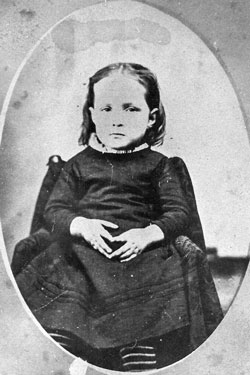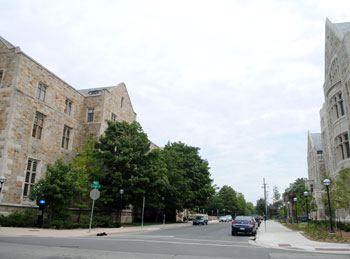Editor’s note: In her most recent local history column written for The Chronicle, “When Work Was Walkable,” Laura Bien described a series of relationships that existed 100 years ago between people who lived within walking distance of their work. She included the following lines: “When Daniel [Quirk] visited the mill, he may have been driven by his coachman, Manchester Roper. By 1910, Manchester had been hired as one of the two servants in Daniel’s household.”
A Chronicle reader recognized that his grandmother had been the other servant. That reader contacted Bien. And Bien got permission to explore the family archives. This month’s column grew out of that research. Fair warning: There’s a bit of ground to cover first before you’ll learn the identity of that reader. But as always with Bien’s text, it’ll be worth the wait. Keep your eye on Mabel.
As 1900 began, 77-year-old York Township farmer Horace Parsons knew that his wife Maria was gravely ill.
His first wife Margaret had died half a century earlier, three years after their New Year’s Day wedding. Horace married his second wife Mary Ann on New Year’s Day, 1850. Just months later, his mother Rebecca died. The following year, Mary Ann died, possibly in childbirth, and Horace’s father Orrin died.
Horace had seen them all laid to rest in Saline’s Oakwood Cemetery.

Mabel as a child. (Image links to higher resolution file.)
Horace married his third wife Maria on May 14, 1860. Over their four decades together, Horace and Maria shared the hardships of 19th-century Michigan farm life. They lost one of their children. They survived lean years early in their marriage, selling off sheep, pigs, and farm machinery. Unlike some neighbors, they hung on to their mortgage, expanding the farm from 30 acres to 50 in 1870 and 66 a decade later.
That year Horace’s restored flock of sheep was up to nearly 80 head and 30 lambs, plus cows and pigs. He grew oats, beans, wheat, potatoes, and Indian corn, and tended 2 acres of apple trees. His and Maria’s place was the typical mixed-crop, mixed-livestock Washtenaw County farm of the era. The heterogeneity of their farm and those of their neighbors was insurance against the not uncommon disasters that regularly struck down one or another animal or crop.
Now his and Maria’s time together, he could see, was ending.
Horace hired a local girl to help. Mabel was a teenager, though neither the term nor the concept existed when she came on as a servant on Horace’s farm. Mabel was the oldest child of brickyard worker and general laborer Orson Pepper and his wife, homemaker Myrtie. The young mother had been a schoolgirl only shortly before Mabel’s birth in 1884. [Full Story]







